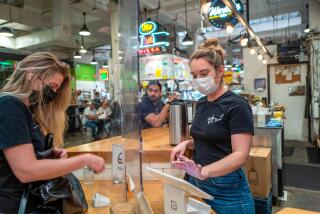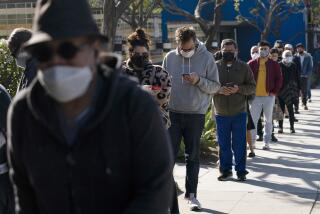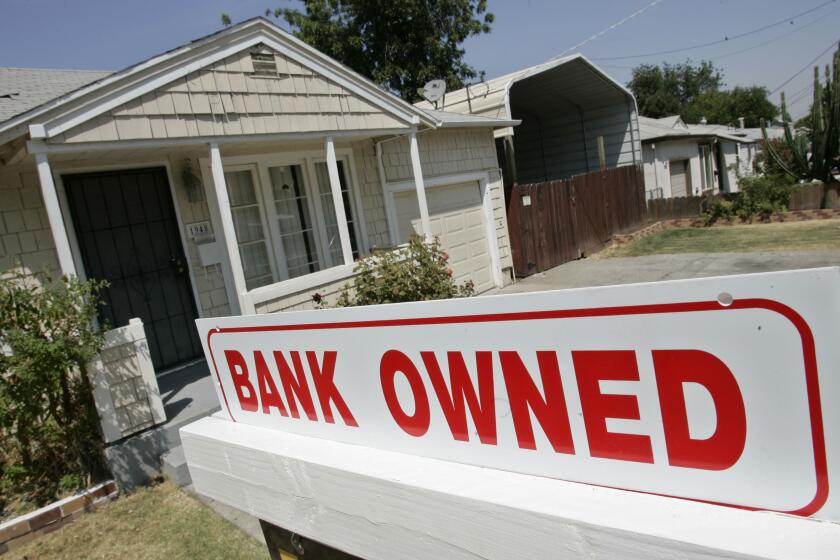‘Broken’ coronavirus tracking system leaves California in the dark: ‘We have no idea’
The breakdown in California’s coronavirus test reporting system is disrupting pandemic response efforts across the state, leaving local officials in the dark about the spread of COVID-19 and blocking the ability of counties to get restrictions lifted until the system is fixed.
State officials have not yet provided details on when fixes will be made to the electronic system, called CalREDIE, that reports coronavirus test results to the state’s disease registry system. California, as a result, lacks an accurate count of coronavirus infections, leading health officials to freeze the state’s watchlist, with no counties added or removed.
“CalREDIE has broken,” said Peter Beilenson, director of Sacramento County’s Department of Health Services. “The bottom line is we don’t know the real caseload.... We don’t know if we are missing 250 cases [a day] or 50 cases,” he said of his local numbers. “We have no idea.”
The flawed picture has cast into serious doubt California’s pandemic outlook. On Wednesday, the state counted 5,300 new coronavirus cases, down from a peak of nearly 13,000 reported about two weeks ago. But the steep drop relies on the underreported data, and health officials remain unsure about the actual caseloads.
The system snafus come amid mixed signs about the state of the pandemic. While some hospitalization rates are down, the state’s death toll reached a grim milestone, topping 10,000 deaths. Orange County also reported its single-day highest COVID-19 death toll Thursday, adding 32 deaths for a total of 697. And White House coronavirus task force coordinator Dr. Deborah Birx on Wednesday singled out California’s Central Valley as a worrisome region.
The lack of reliable infection rate data has led many counties to add disclaimers on their public health websites saying the information is unreliable. The data is also not being published on the state’s county data monitoring website, according to the California Department of Public Health. The state has not given a timetable for when the problem might be fixed.
The flawed data has not affected patient care or test results for individual patients, officials said.
Dr. Mark Ghaly, California Health and Human Services secretary, called the problem his department’s “top priority” and said a team of dozens had been working “around the clock” to make fixes.
“Having accurate data is critical for public confidence, contact tracing and hospital surge planning. We will not rest until this problem is resolved,” Ghaly said in a statement. “All Californians and local public health officials must have accurate data, and we pledge to share a full accounting of when these problems began and their magnitude as soon as we have a clear understanding — and the solutions to address them.”
The California Department of Public Health has directed all laboratories to report positive results directly to county health departments until the problem is resolved. Some county health departments are resorting to counting the testing results by hand to get accurate totals.
Local public health officials and experts are expressing growing frustration with the state’s response. Beilenson said state officials had not clarified how extensive the underreporting was or whether the missing data came from a single lab or multiple agencies. Some officials fear that weeks of data may be inaccurate.
UC San Francisco professor Dr. Peter Chin-Hong, an expert in infectious diseases, said the inaccurate numbers potentially could affect federal aid because case numbers are examined before help is awarded. Low numbers, he said, could mean fewer federal resources.
“It’s a rationale that the feds can say, ‘Well maybe you don’t need this thing we have, or financial resources, because it doesn’t seem as bad,’” Chin-Hong said.
But one of the most damaging fallouts of the missed data, he said, might be a decline in public trust. Case numbers are one of the measurements used to determine what can open in a county and when social restrictions can be lifted, and the public watches them closely.
“We always put faith in computers, data dumps, and I think having someone discover this glitch makes us wonder: What other glitches are there?” Chin-Hong said. “Data is power, and if data are unreliable, it just makes us feel a little bit queasy.”
The CalREDIE system is relied on by officials to determine infection rates and to decide which counties land on the watchlist, a category that restricts them from opening many indoor activities. School reopenings may also be hindered by the inaccurate numbers. The counties now on the list, including Los Angeles, account for most of the state’s population.
Counties must be off the list for 14 days before they can reopen certain businesses. The inaccurate numbers also may affect state waivers that could allow some private and parochial schools to open for in-person classes.
Public health officials also rely on the system to trace contacts of infected people, and without accurate reports, the tracing cannot be done.
Los Angeles County Health Officer Dr. Muntu Davis said in a news conference Thursday that the glitch has produced an undercount of positive cases in the county. With new information from the laboratories, L.A. County health officials hope to have a more accurate count by next week.
“But it might take us some time,” Davis said.
Barbara Ferrer, Los Angeles County’s health director, has urged residents who test positive to alert county health officials so they can conduct a contact tracing interview and identify those who may have been exposed so they can avoid infecting others.
“We are really worried about the fact that we’re losing some cases, and that may in fact result in some small increases in transmission in the weeks ahead,” she said.
In San Francisco, officials said the data problems are seriously affecting their ability to investigate new cases and trace contacts.
“The city will pause providing updated data on testing, cases, contact tracing metrics and associated key public health indicators until the statewide issue is resolved,” San Francisco’s COVID-19 Joint Information Center said Thursday.
Meanwhile, Alameda County, which has been hit hard by the pandemic, has decided to offer $1,250 to as many as 7,500 COVID-19 sufferers so they can isolate. The county’s supervisors unanimously approved the $10-million pilot program on Tuesday, but when it will start is unclear. The money will go to infected residents who do not receive unemployment or sick leave benefits.
Times staff writers Taryn Luna and Phil Willon contributed to this report.
More to Read
Start your day right
Sign up for Essential California for news, features and recommendations from the L.A. Times and beyond in your inbox six days a week.
You may occasionally receive promotional content from the Los Angeles Times.









